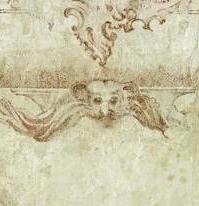Remembering the Türkenlouis
Margrave Ludwig Wilhelm von Baden-Baden died in 1707. His fame as the conqueror of the Turks remained unforgotten, including by his family: In 1723, Sibylla Augusta had the Jupiter statue erected on the palace roof, as a symbol of the war hero. His younger son, August Georg, installed the Turkish chamber in the palace in 1765 to display all the looted Turkish works. His elder son, Ludwig Georg, had honored his father a decade earlier: In 1752, on the 45th anniversary of Ludwig Wilhelm's death, he had a monument erected for his father.










